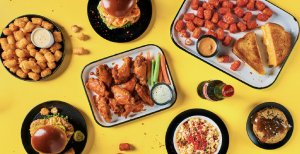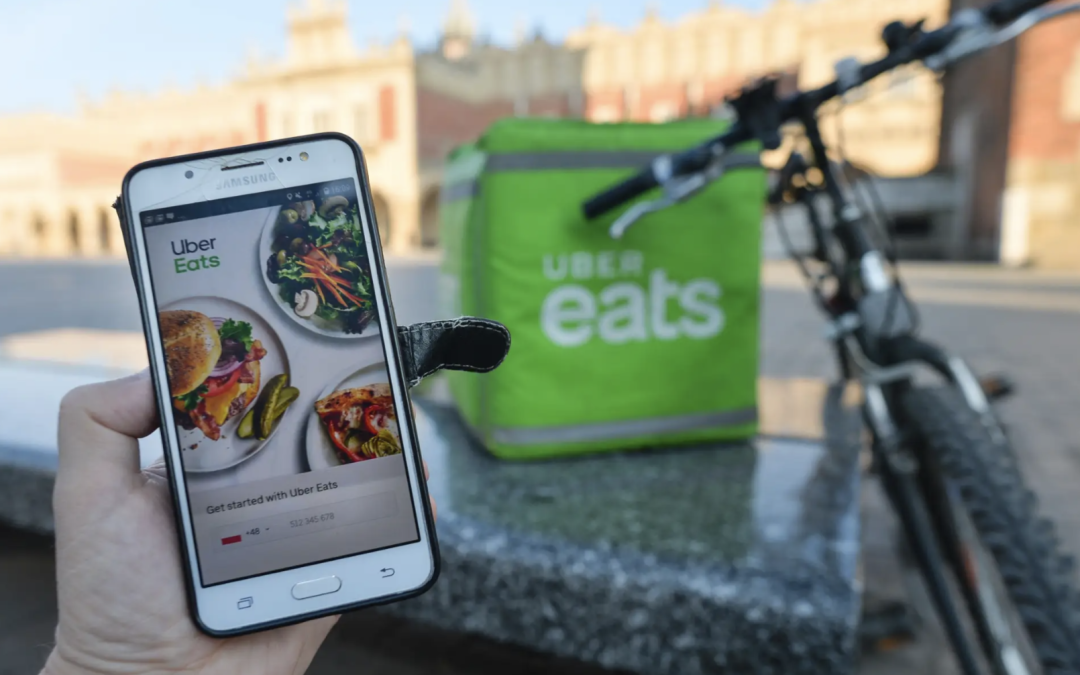In the current third-party ordering landscape, one might open an app to find a handful of different chicken wing options in the area, but in reality, some of those brands could actually be the same product, coming from the same location, under a different name.
In response to consumer feedback on the matter and concerns on duplicate virtual brands clogging its app, Uber Eats is removing about 5,000 virtual brands from its platform, while also creating new guidelines for its partners.
Virtual restaurants are delivery-only businesses operating out of an existing restaurant or operation. The concept exploded on the scene amid the pandemic with popular brands like MrBeast Burger catering to at-home diners and providing an additional stream of revenue for businesses—and the sector continues to grow. Uber Eats reports numbers jumped from 10,000 virtual storefronts in 2021 to nearly 40,000 today.
Refereeing the digital real estate race
But not all of those listings are original concepts, as some restaurants list menu items multiple times under different brand names in an effort to attain more digital real estate—a move John Mullenholz, head of dark kitchens at Uber, calls “platform hacking.”
“ I don’t think that this is a term that these restaurants are using on their side, but I think the objective from their end are effectively to create as many concepts for a certain cuisine type as possible to increase visibility for their business. They’re thinking, hey if I create 10 different sandwich concepts then I am going to corner the market for sandwiches for NYC.”
Mullenholz notes instances of 14 brands serving the same sandwiches from a New York City deli and a San Francisco-based Pakistani restaurant, that replicated its menu 20 times. Uber’s cuts will target these online-only brands with repeating menus while keeping the parent restaurant on the app.
In a recent viral YouTube video, comedian Eddy Burback filmed himself eating nine fish sandwiches listed under different brands. While the sandwiches tasted good, he said, they were identical and came wrapped in the same paper design. The video has raked in more than 4 million hits in a few weeks.
Mullenholz makes it clear that Uber’s downsizing is not to sway away from virtual restaurants but to provide a more quality experience for its consumers.
“We spent a lot of time trying to come up with a really thoughtful policy because we continue to see virtual restaurants as a key source of growth and innovation for our restaurant partners around the country, but at the same time draw a line in the sand around things like menu duplication.”
Uber’s new guidelines include the following:
- 60 percent of virtual brands menus must differ from its parent restaurant and any other brands coming from the same physical location.
- Maintain a 4.3-star rating or higher on the Uber Eats platform, have 5 percent or fewer orders cancelled by the merchant, and 5 percent or lower inaccurate order rates.
Earlier this month, Grubhub reportedly updated its guidelines to monitor the number of brands stemming from a physical address as well as began tracking cancellation rates from virtual restaurants. DoorDash also quietly released new requirements stating brands have to be at least 50 percent differentiated from each other and list at least eight items.
Shortly after Uber’s scale back announcement, the company released a program to assist restaurants in setting up legitimate delivery-only concepts. The Certified Virtual Restaurant Program will connect restaurants with big-name virtual providers, Nextbite, Virtual Dining Concepts and Accelerate.
“If you need help launching a virtual restaurant, or you’re not comfortable coming up with your own concept, and you’re not comfortable marketing it yourself, we have high-quality, certified partners that we can connect you with,” said Mullenholz.
Both small businesses and large chains utilize virtual brands. For some, it’s a way to gain profit during slower parts of the day when kitchens have the extra capacity to be utilized, while others use the brands to reach different audiences. For some restaurants, virtual brands have been vital in adding another needed stream of revenue—something that Alex Canter, CEO of Nextbite wants to remind everyone.
“When a consumer is ordering from a virtual restaurant, I know it doesn’t feel this way, but they are actually supporting a local restaurant or restaurant in their area to sell more food online. I just want to remind everyone that restaurants are already operating on razor-thin margins,” said Canter.
“For a restaurant to be able to layer these incremental orders onto their business without having to add any extra labor or pay extra for rent is an important strategy for restaurants to stay in business and stay alive and not struggle to break even,” he added.
But Canter does think that the move to clear up the virtual restaurant space is a good thing, adding that like-duplicates are “taking up space in these apps that are not contributing anything of value” and that “it will free up some of the clutter on these platforms that take away from regular restaurants and well-performing virtual brands”.
It all comes down to transparency and quality
Canter believes the key to a successful virtual restaurant experience is transparency and building quality delivery-only brands. He adds that he understands where consumer confusion and weariness stem from when brands are not listed as virtual restaurants on apps. He adds that for a Nextbite brand on DoorDash, it states virtual restaurant front and center—the same cannot be said for all virtual restaurant parent companies, nor is that listing option available on all third-party platforms.
When it comes to food quality, Canter discusses how he thinks some reasoning for consumer’s negative connotations towards virtual brands is due to the actual food experience, “especially for those not doing it properly.”
“We have a chance as a company to design brands that are specifically optimized for an [off-premises] experience which is unique. Most restaurants have to convert their in-store menu to work online, when we get to design restaurants specifically for delivery from the beginning, we can choose to focus on items that we know are going to hold up longer (in travel).”
Canter predicts that in 5 to 10 years some of the top-performing brands will be specifically designed and optimized for delivery, referencing models such as Sweetgreen and Chipotle.
Overall, the virtual restaurant space is here to stay, but new regulations will certainly shift the market and how it’s operated. But for now, consumers can expect an easier browsing experience on most major third-party delivery apps.


